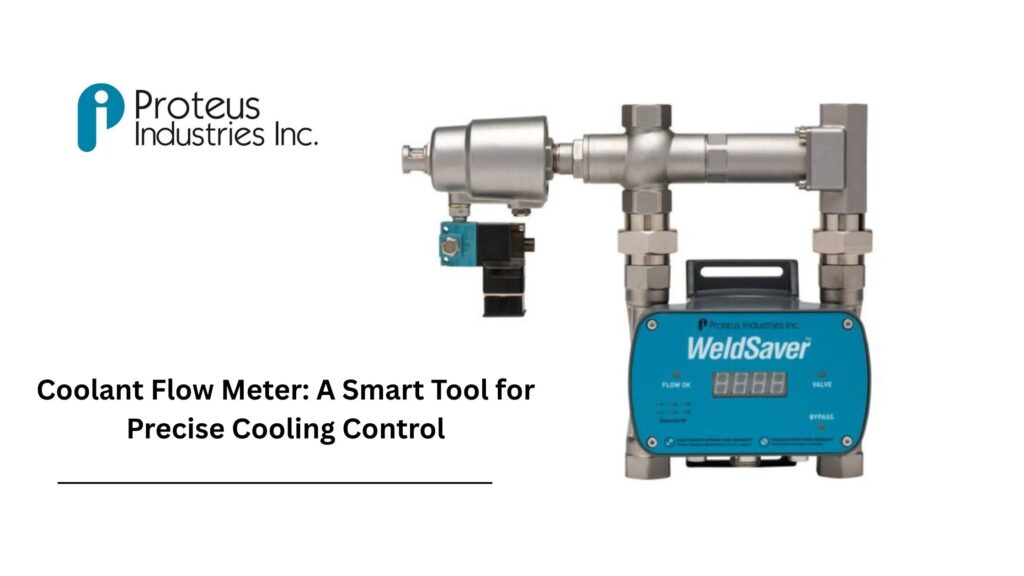In industries, vehicles, and heavy machinery, overheating can be a major concern. Whether it’s a car engine or an industrial chiller, maintaining the right temperature is critical for smooth operation and safety. One essential tool that helps in this process is a coolant flow meter.
Let’s explore what a coolant flow meter is, how it works, and why it plays such a crucial role in ensuring efficiency and protection in cooling systems.
What is a Coolant Flow Meter?
A coolant flow meter is a device designed to measure the flow rate of coolant — the liquid that absorbs and transfers heat to keep systems from overheating. Coolants can include water, glycol-water mixtures, or other heat-transfer fluids, depending on the application.
These meters are typically installed in cooling lines of engines, industrial systems, data centers, HVAC units, and medical devices. They continuously track how much coolant is flowing and help users monitor whether the system is performing as expected.
Why is Coolant Flow Monitoring Important?
Coolant flow monitoring ensures that:
- Heat is being removed efficiently
- The system isn’t running too hot or too cold
- Maintenance needs are identified early
- Energy is used efficiently
- Costly system failures are avoided
For example, in an automobile engine, if coolant isn’t circulating properly, the engine could overheat, causing irreversible damage. Similarly, in industrial machines or lasers, precise temperature control is vital for safe and efficient operation.
How Does a Coolant Flow Meter Work?
Coolant flow meters work by detecting and measuring the rate at which coolant passes through a system. There are different types of technologies used to measure flow, including:
- Turbine Flow Meters: A rotor spins with the flow, and its speed is used to calculate the flow rate.
- Electromagnetic Flow Meters: These use magnetic fields to measure the flow of conductive coolants.
- Ultrasonic Flow Meters: Sound waves measure flow without any moving parts.
- Positive Displacement Meters: These measure fluid by separating it into fixed volumes.
Each type has its own advantages, and the right one depends on your specific cooling system’s needs.
Key Features of a Good Coolant Flow Meter
When choosing a coolant flow meter, look for the following features:
- High Accuracy: Reliable data for better decision-making.
- Temperature Resistance: Designed to handle hot or cold coolants.
- Durability: Withstand high-pressure and corrosive environments.
- Real-Time Monitoring: Instant feedback to avoid delays.
- Digital Output: Easy integration with control systems and data logging tools.
Advanced models also offer wireless connectivity, alarms, and remote monitoring features.
Where Are Coolant Flow Meters Used?
Coolant flow meters are versatile and used across many sectors:
1. Automotive Industry
Engines, EV battery cooling systems, and transmission systems rely heavily on coolant flow meters to ensure optimal performance and prevent overheating.
2. Industrial Machinery
CNC machines, welding systems, and manufacturing tools often produce intense heat. Coolant flow meters help maintain precise temperatures to avoid breakdowns and product defects.
3. Medical Equipment
Machines like MRI scanners and lasers generate heat during operation. A consistent coolant flow ensures patient safety and equipment accuracy.
4. Data Centers
Servers and other IT equipment require cooling to function reliably. Flow meters help monitor the coolant in liquid cooling systems to prevent overheating and downtime.
5. HVAC Systems
In commercial or industrial buildings, flow meters help balance the flow in chillers and heat exchangers for energy-efficient climate control.
Benefits of Using Coolant Flow Meters
Still wondering why a coolant flow meter is worth investing in? Here are some key benefits:
- ✅ Improved Equipment Life: By preventing overheating, it extends the lifespan of machines and engines.
- ✅ Reduced Maintenance Costs: Early detection of flow issues helps avoid costly repairs.
- ✅ Energy Savings: Proper flow monitoring helps systems run more efficiently.
- ✅ Process Accuracy: In industries where precision matters, stable cooling ensures product quality.
- ✅ Enhanced Safety: Overheated equipment can be dangerous. Flow meters reduce risk by ensuring consistent cooling.
How to Install and Maintain a Coolant Flow Meter
Installation is typically straightforward, but it must be done carefully for accurate readings. Here’s a basic overview:
- Choose the right size and type for your coolant line.
- Install in a straight pipe section to avoid turbulence.
- Follow manufacturer guidelines for flow direction and positioning.
- Connect to a monitoring system if needed (digital display, control panel, or IoT platform).
Maintenance tips:
- Regularly check for blockages or leaks.
- Clean internal components if there’s debris buildup.
- Calibrate occasionally to ensure accuracy.
- Inspect seals and connectors for wear and tear.
Most modern meters are low-maintenance and built to last in harsh environments.
Common Signs You Need a Coolant Flow Meter
Not sure if your system needs one? Here are signs it might:
- Inconsistent system temperature
- Frequent overheating or shutdowns
- Equipment wear due to poor thermal management
- Unexpected coolant leaks
- High energy bills from inefficient cooling
If you experience any of these, adding a coolant flow meter can help you detect problems early and optimize performance.
Final Thoughts
A coolant flow meter might seem like a small component, but it plays a big role in maintaining temperature stability, energy efficiency, and system health. Whether you’re managing an automotive engine, an industrial setup, or a data center, proper coolant flow is non-negotiable.
By investing in a reliable coolant flow meter, you’re not only protecting your equipment but also improving productivity, reducing costs, and ensuring safety. It’s a simple tool with powerful benefits — and an essential part of modern cooling systems.
- Coolant Flow Meter: A Smart Tool for Precise Cooling Control
- In industries, vehicles, and heavy machinery, overheating can be a major concern. Whether it's a car engine or an industrial chiller, maintaining the right temperature is critical for smooth operation and safety. One essential tool that helps in this process is a coolant flow meter.
- coolant flow meter
Related posts:
 Discover the Best Full Body Massage Experience in Lancaster, PA with Focused Care Therapeutic Massage
Discover the Best Full Body Massage Experience in Lancaster, PA with Focused Care Therapeutic Massage
 ISO 27001 Training: A Real-World Lifeline to Reduce the Risk of Data Breaches
ISO 27001 Training: A Real-World Lifeline to Reduce the Risk of Data Breaches
 How Instagram Stories Help Businesses: A 2025 gerat Guide ..
How Instagram Stories Help Businesses: A 2025 gerat Guide ..
 “GV GALLERY® || TheGv Gallery Shop || Official Clothing Store “
“GV GALLERY® || TheGv Gallery Shop || Official Clothing Store “
 Don’t Miss Out on today’s Best Sale Offer with Huge Discounts!
Don’t Miss Out on today’s Best Sale Offer with Huge Discounts!
 Why Smart Entrepreneurs Trust a Certified Tax and Business Advisor Over DIY Tax Tools
Why Smart Entrepreneurs Trust a Certified Tax and Business Advisor Over DIY Tax Tools
 Web Design Agency Netherlands: Elevate Your Online Presence with Creative Excellence
Web Design Agency Netherlands: Elevate Your Online Presence with Creative Excellence
 Comprehensive Seed Industry Analysis: Trends & Market Insights
Comprehensive Seed Industry Analysis: Trends & Market Insights







